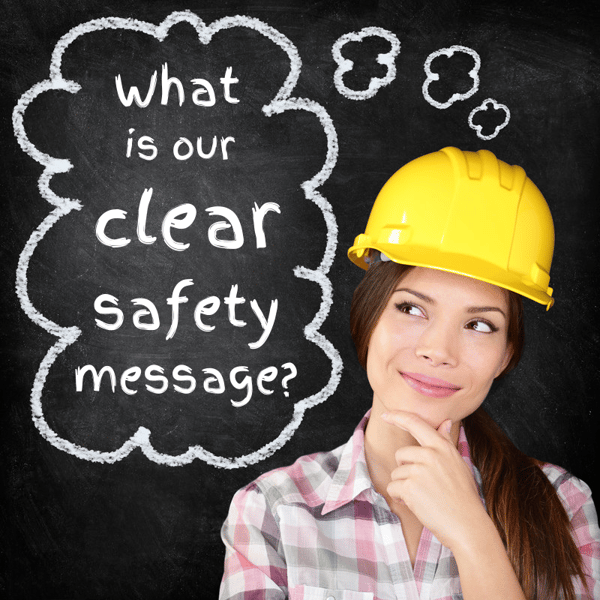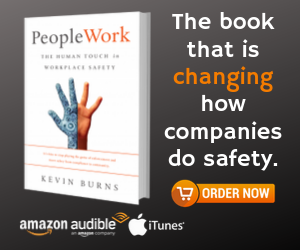Why Safety Messaging Matters
When employees actively support and participate in safety, they have accepted safety as their way to work. Without the employees’ willingness to support and participate in the safety program, the company's default position becomes things like rules-enforcement. When a workplace is centered around enforcing rules, people become more reluctant to go to work. Morale suffers and you lose your good people.
You’ve probably been frustrated in getting buy-in from your front-line employees. Maybe you’ve gathered your team in a room for a safety event or stand-down. You showed them “safety” videos (I use quotation marks because I’ll bet most of those videos focused on injury, not safety). You instructed them in things like ladder use, handwashing, or lock-out tag-outs.
As much as you think it went well during the stand-down, it didn’t stick. That’s because your stand-down safety event didn’t actually get buy-in.
Too many mixed messages
Most safety events are a hodgepodge of mixed messages. A few minutes on a particular process. Another few minutes on reviewing stats, charts, and graphs of past safety performance (oh, if only it were just a few minutes – not the hour or so that it usually is). Then there’s the Darwin Award winners in safety – those ridiculous video snippets of employees doing things wrong with dire consequences. And if a presenter has time left, they pad it with filler cats-in-tutus type videos because someone on YouTube labeled it “safety.”
Once you are done your meeting, is there a call-to-action? Is there a “point” to the meeting? Is there a follow-up, what-to-do-next strategy?
Or was it a collection of stuff loosely labeled “safety” with the hope that your people figure out what to do with it all?
Well, they won’t figure it out. Because you didn’t figure it out. You didn’t point your meeting’s outcome at a particular call-to-action. Something for them to do at the end of the meeting.
This is exactly the point when we discuss Step 1 of the 3-Step Plan for Safety Buy-In; clarify your safety message.
A clear safety message is actionable.
You have got to make the takeaway message of safety as easy to understand as possible.
Numbers are not a message. Videos are not a message. Process review is not a message. Injury stories are not a message.
You need to make your message of safety actionable. Your people have to know what action to take from it.
So, what is the message that you want your people to take away from your meeting? Something that you want your people to do that they are not doing now. Something that you want them to improve that could happen with better focus. You can even build a message around something you want them to oppose; something that your team will not stand for.
As a point of note, your clear safety message cannot be decided by just the safety manager. The safety manager has a particular viewpoint and lens that she or he sees the world through. You can bet it is a very different view than the people who are not currently buying-in to safety.
Your clear safety message needs to be a groupthink exercise. A mixture of senior managers, front-line supervisors, middle managers and a few safety people.
A clear safety message unifies.
Creating a clear safety message has power. It can become the rallying cry for front-line employees. It can become that unifying mindset that brings everyone together.
Get it down to seven words or less (if longer than 7 words the ability to recall the message drops off – think about your company’s own mission statement for proof of this).
Your own marketing and sales department clarifies their message to acquire new customers. The same rules apply here. Except this time, you’re talking to internal customers. They need a clear message to buy-in to. Simple. Specific. Short. A message that becomes the foundation of all of your safety communications.
Once you’ve simplified and clarified your message, then you can move on to Steps 2 and 3 in the 3-Step Process for Buy-in. Step 2 is to build supervisor support for the message. Step 3 is to get employee buy-in for the message.
Step 1 simplifies and clarifies the safety message. And because it is a clear and simple safety statement, it’s easy for supervisors to carry into the field and down onto the floor (Step 2). When it makes sense to supervisors, they will help it to make sense to employees (Step 3).
Clarify your message. Get supervisor support. Get buy-in from employees. The 3-Step Plan for Safety Buy-in. In that order.
Create your own clear safety message. You will find much greater clarity from employees about what you want them to do next in safety.
To help you clarify your safety message, consider the RYT Program (Rally Your Team).
Go to KevBurns.com for more information on creating your own clear safety message.
Kevin Burns is the President/CEO of KevBurns Learning. Kevin works with smart, caring companies to energize safety culture, build teamwork, and improve employee participation in safety.
In 2020, BookAuthority.org named PeopleWork #7 of The Top 44 Workplace Safety Books of All Time. Buy yourself a copy of PeopleWork: The Human Touch in Workplace Safety and give another as a gift to a colleague.
Subscribe to Kevin’s Blog.







